Note
Go to the end to download the full example code.
Multidimensional benchmarks#
One of pyquickbench’s strengths is its ability to run multidimensional benchmarks to test function behavior changes with respect to several different arguments, or to assess repeatability of a benchmark.
For instance, let’s run the following benchmark a thousand times.
import pyquickbench
def comprehension(n):
return ['' for _ in range(n)]
def star_operator(n):
return ['']*n
def for_loop_append(n):
l = []
for _ in range(n):
l.append('')
all_funs = [
comprehension ,
star_operator ,
for_loop_append ,
]
n_bench = 12
all_sizes = [2**n for n in range(n_bench)]
n_repeat = 1000
time_per_test = 0.2
all_values = pyquickbench.run_benchmark(
all_sizes ,
all_funs ,
n_repeat = n_repeat ,
time_per_test = time_per_test ,
filename = timings_filename ,
)
pyquickbench.plot_benchmark(
all_values ,
all_sizes ,
all_funs ,
show = True ,
)
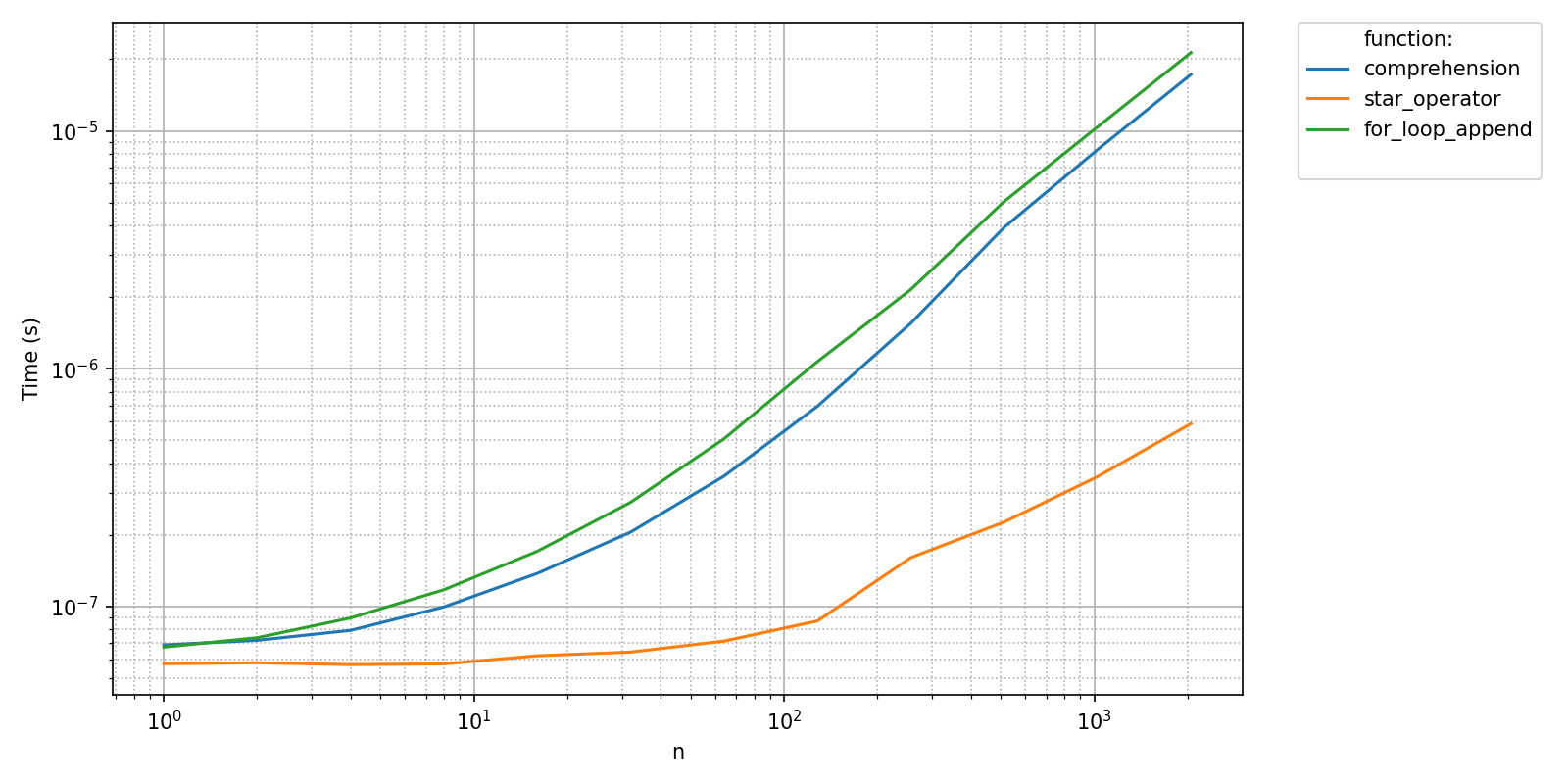
By default, only the minminum timing is reported on the plot as recommended by timeit.Timer.repeat(). This being said, the array all_values does contain n_repeat timings.
print(all_values.shape[0] == len(all_sizes))
print(all_values.shape[1] == len(all_funs))
print(all_values.shape[2] == n_repeat)
True
True
True
All the different timings can be superimposed on the same plot with the following plot_intent argument:
plot_intent = {
pyquickbench.default_ax_name : "points" ,
pyquickbench.fun_ax_name : "curve_color" ,
pyquickbench.repeat_ax_name : "same" ,
}
pyquickbench.plot_benchmark(
all_values ,
all_sizes ,
all_funs ,
show = True ,
plot_intent = plot_intent ,
)
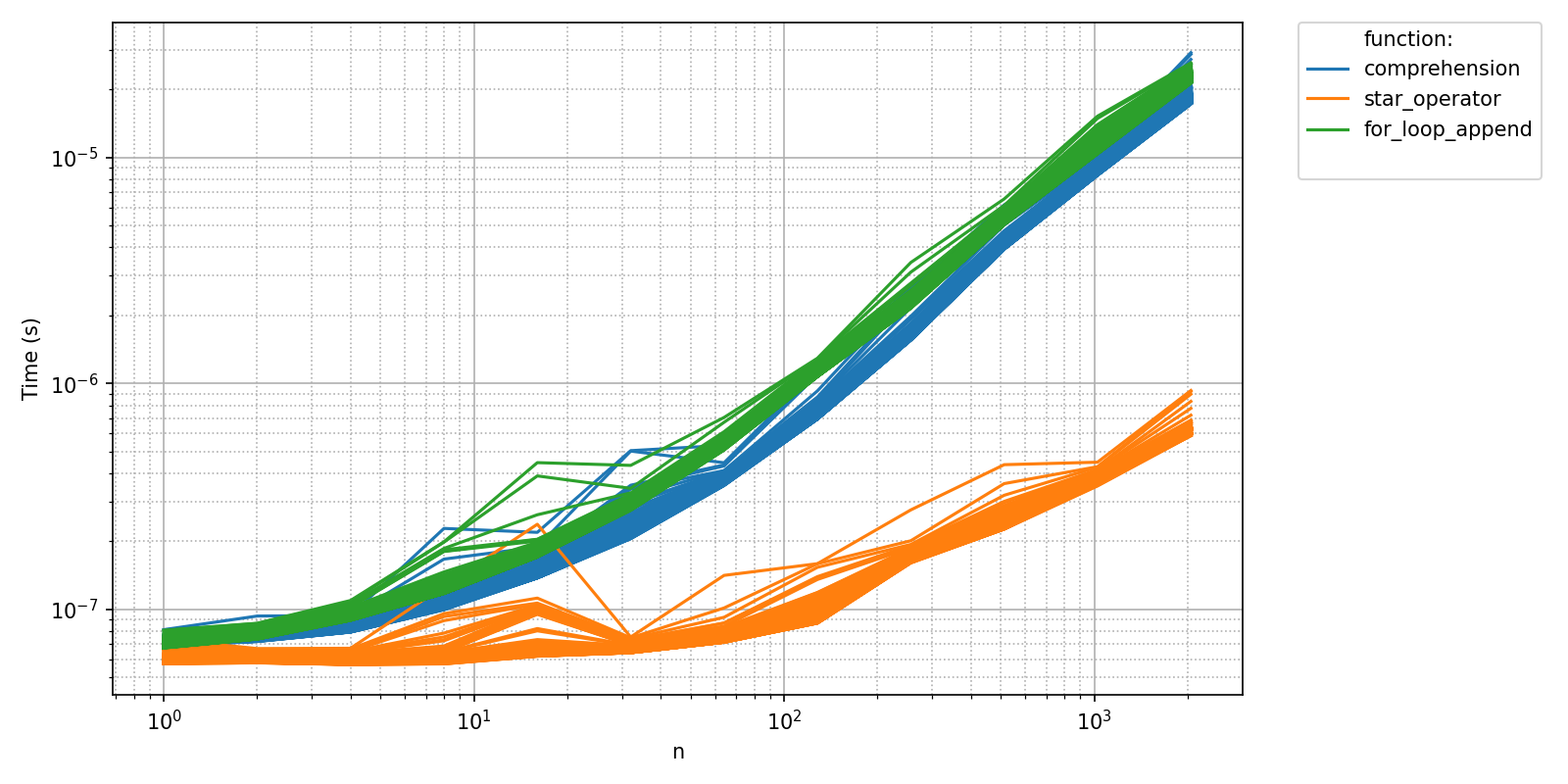
The above plot is quite cluttered. For more concise information, let’s use curve transparency:
pyquickbench.plot_benchmark(
all_values ,
all_sizes ,
all_funs ,
show = True ,
plot_intent = plot_intent ,
alpha = 1./255 ,
)
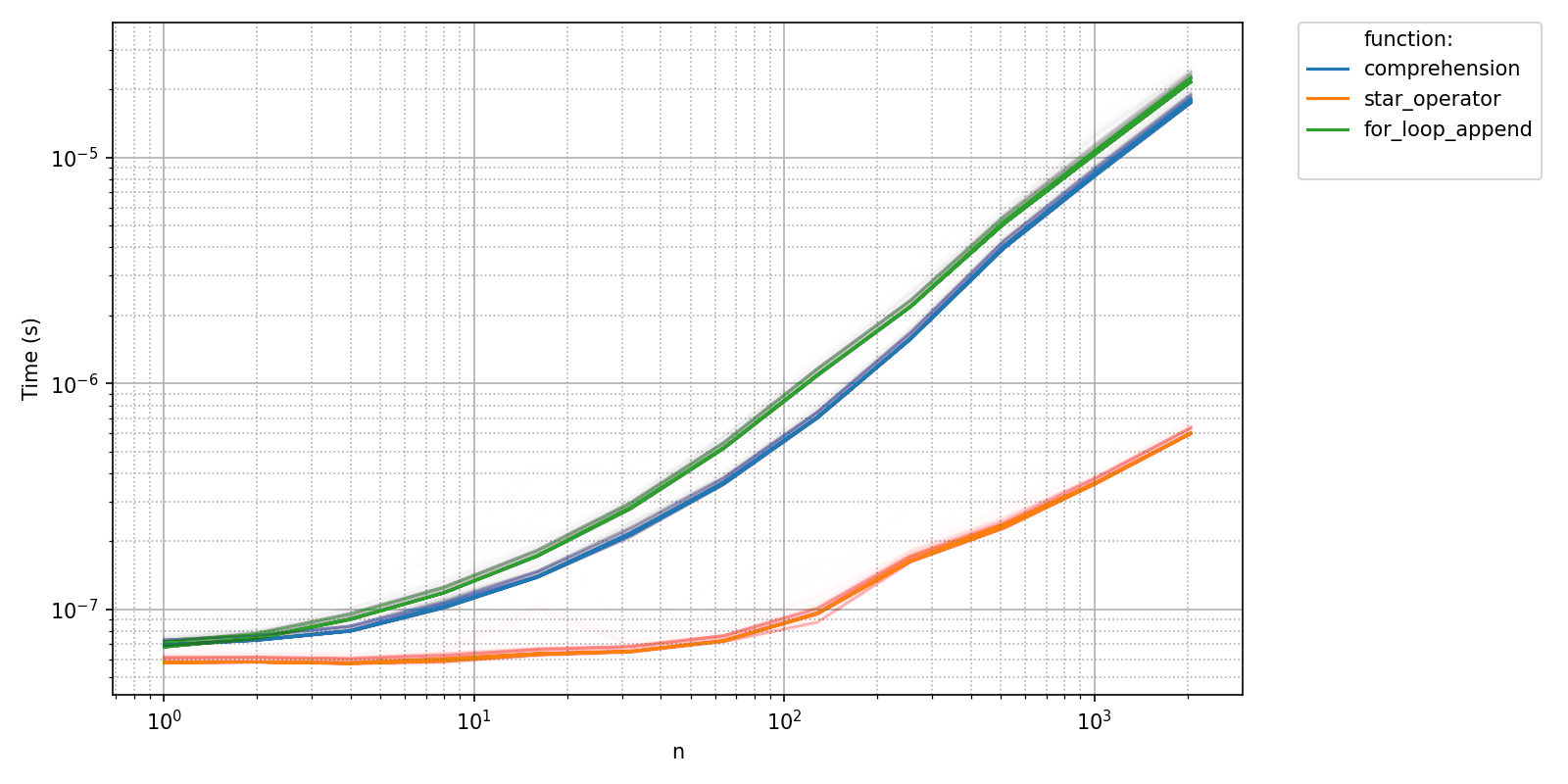
The above plot gives a good idea of the concentration of data, but bounds on timing are not very clear. Using reductions in plot_intent, we can for instance choose to plot minimal, median and maximal values. The list of all possible reductions is accessible in pyquickbench.all_reductions.
fig, ax = pyquickbench.plot_benchmark(
all_values ,
all_sizes ,
all_funs ,
return_empty_plot = True ,
)
all_reductions = ["reduction_min", "reduction_max", "reduction_median"]
all_linestyles = ["dotted", "dashed", "solid"]
for (
reduction ,
linestyle ,
)in zip(
all_reductions ,
all_linestyles ,
):
plot_intent = {
pyquickbench.default_ax_name : "points" ,
pyquickbench.fun_ax_name : "curve_color" ,
pyquickbench.repeat_ax_name : reduction ,
}
pyquickbench.plot_benchmark(
all_values ,
all_sizes ,
all_funs ,
plot_intent = plot_intent ,
linestyle_list = linestyle ,
fig = fig ,
ax = ax ,
)
plt.tight_layout()
plt.show()

Another way to render data dispersion is to use the "violin" plot intent. This type of plot shows a Kernel Density Estimation of the timings distribution as well as extreme measured values for every set of input parameters.
plot_intent = {
pyquickbench.default_ax_name : "points" ,
pyquickbench.fun_ax_name : "curve_color" ,
pyquickbench.repeat_ax_name : "violin" ,
}
pyquickbench.plot_benchmark(
all_values ,
all_sizes ,
all_funs ,
plot_intent = plot_intent ,
show = True ,
)
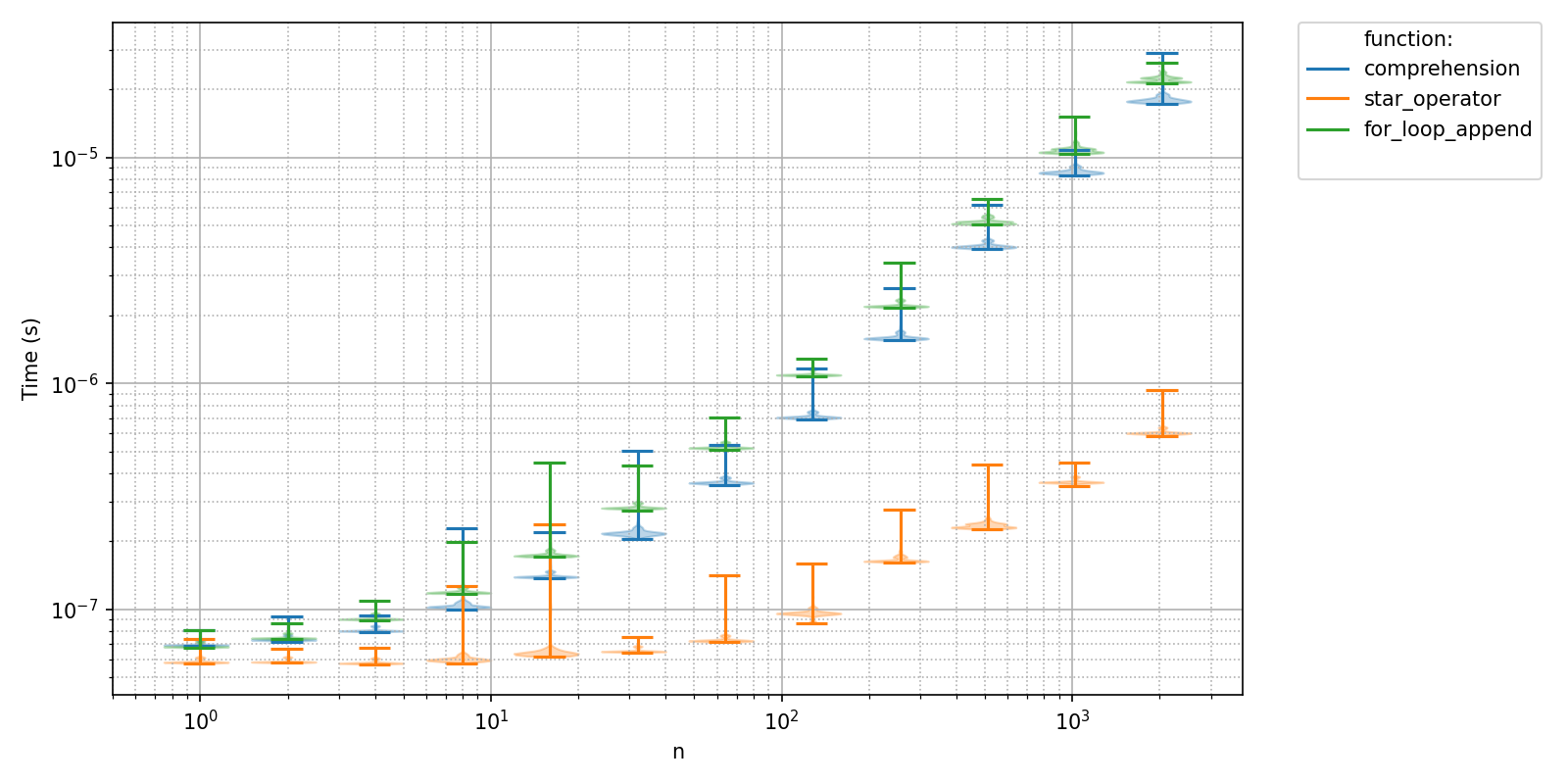
More generally, the plot_intent argument controls what dimension of the array all_values is plotted, and in what way. For instance, as a way to better understand the statistics of the measured timings, we can plot the measured time of execution as a function of the index of the repeated benchmark for a single function.
plot_intent = {
pyquickbench.default_ax_name : "curve_color" ,
pyquickbench.fun_ax_name : "single_value" ,
pyquickbench.repeat_ax_name : "points" ,
}
single_values_val = {pyquickbench.fun_ax_name: "star_operator"}
pyquickbench.plot_benchmark(
all_values ,
all_sizes ,
all_funs ,
show = True ,
plot_intent = plot_intent ,
single_values_val = single_values_val ,
)
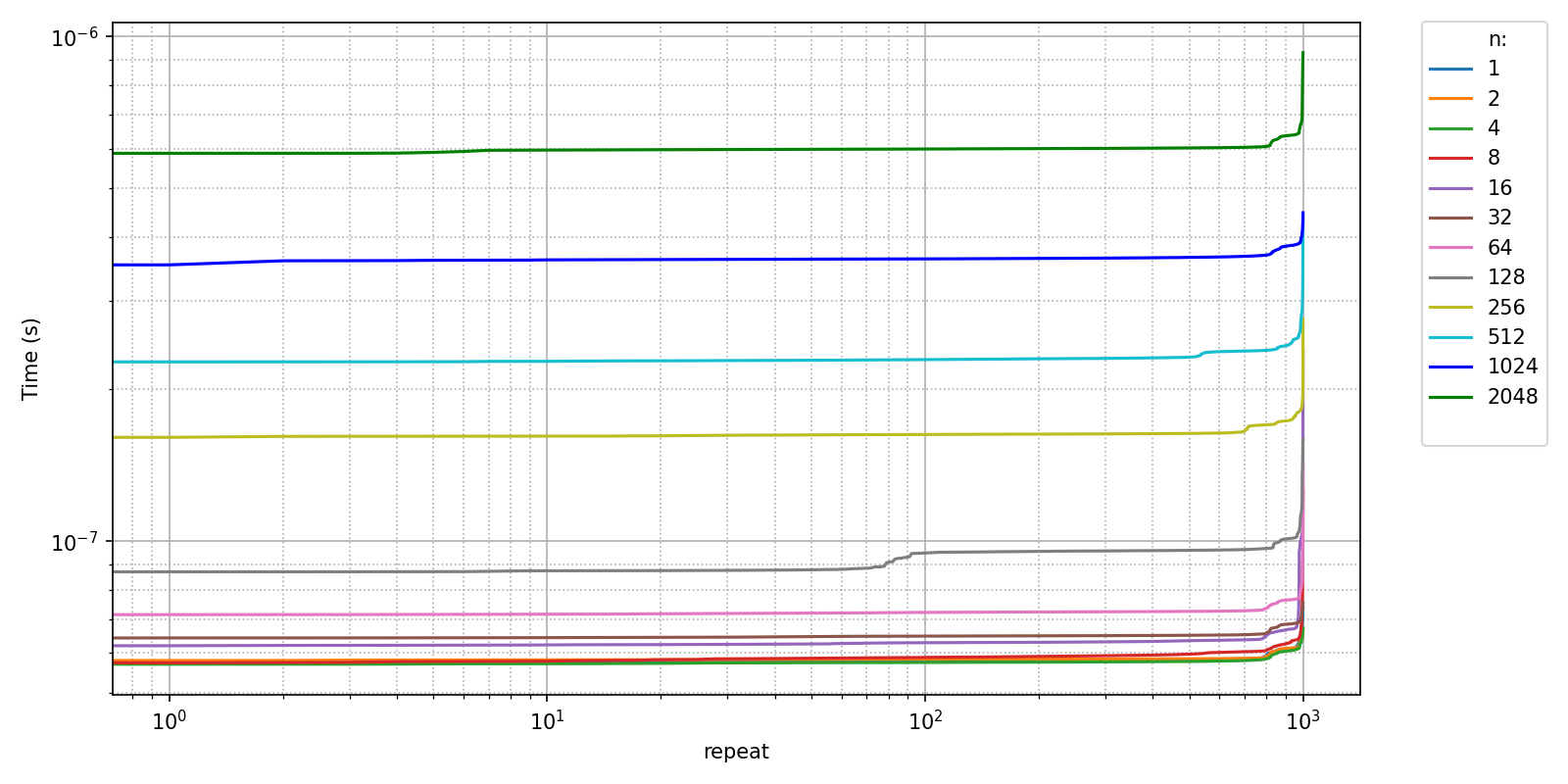
Or for all functions, but a single value of input size.
plot_intent = {
pyquickbench.default_ax_name : "reduction_max" ,
pyquickbench.fun_ax_name : "curve_color" ,
pyquickbench.repeat_ax_name : "points" ,
}
pyquickbench.plot_benchmark(
all_values ,
all_sizes ,
all_funs ,
show = True ,
plot_intent = plot_intent ,
)
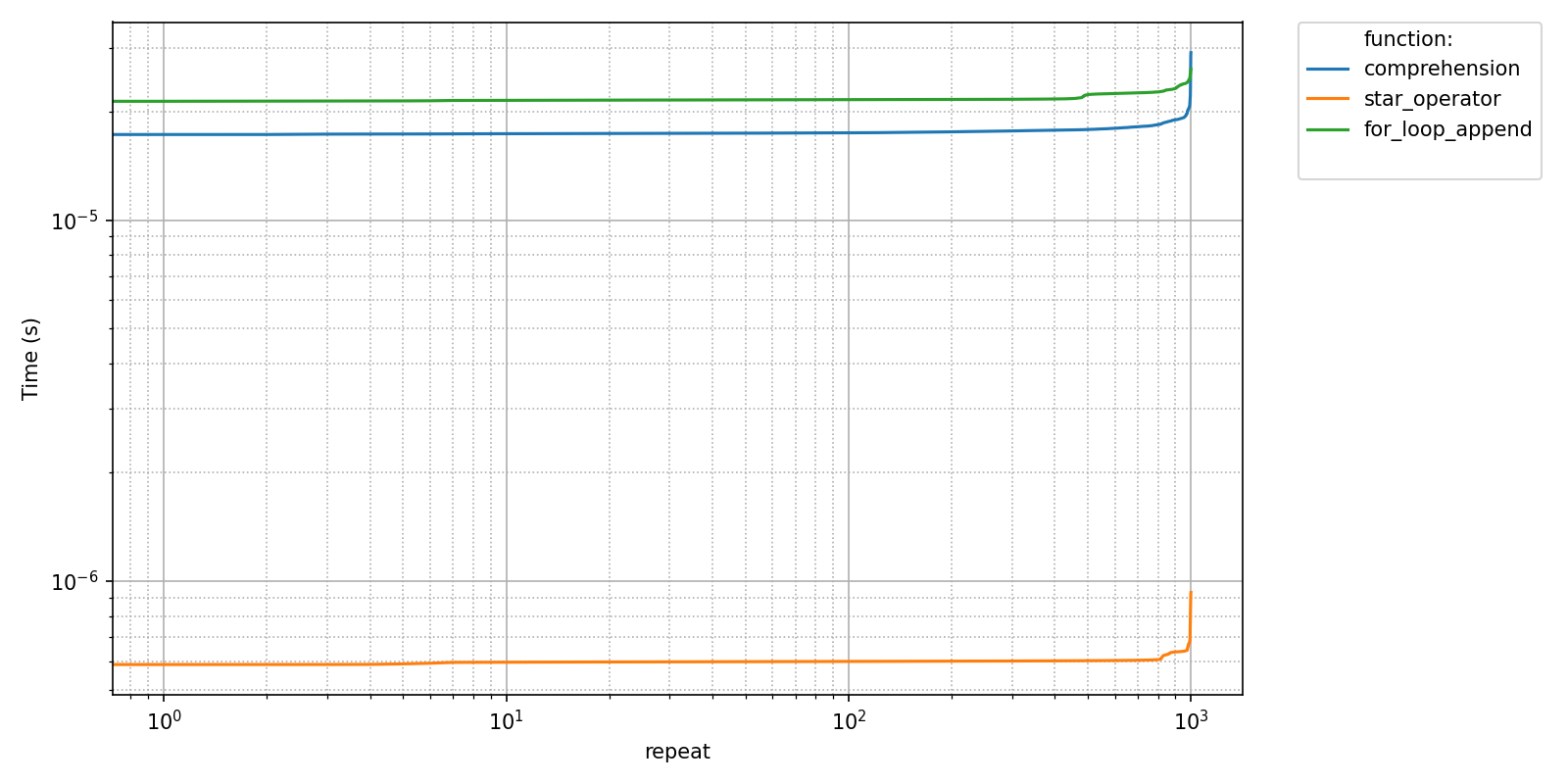
As can be seen in the above plots, the timings are automatically sorted along the pyquickbench.repeat_ax_name axis.
The list of all possible plot_intent values is available in pyquickbench.all_plot_intents.